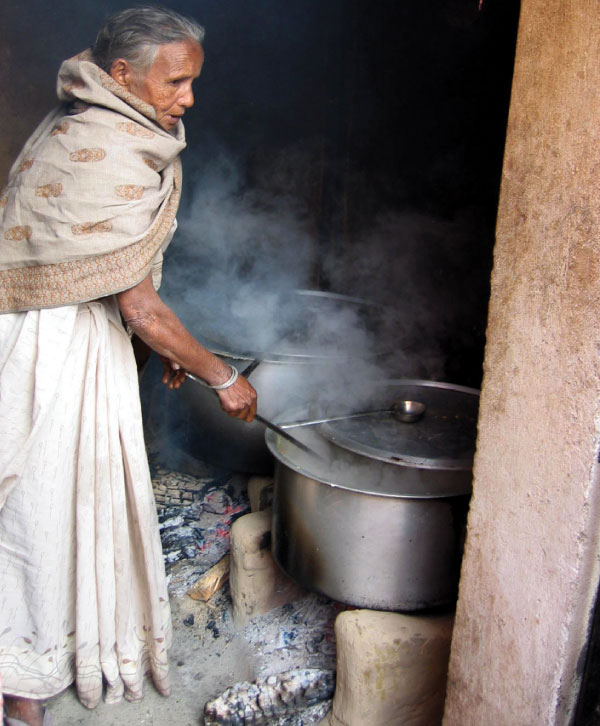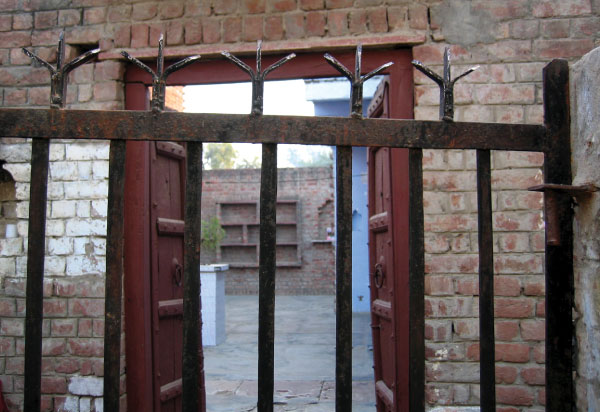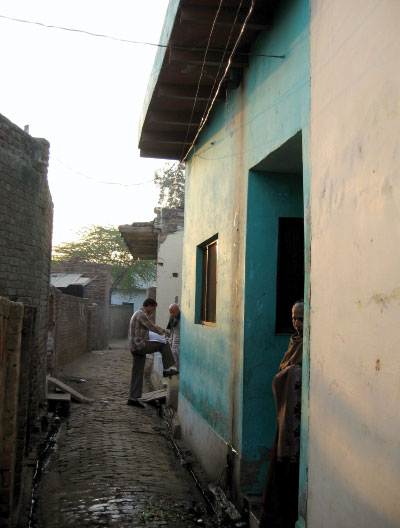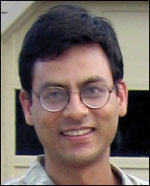|
|
|
ADVERTISEMENTS
|
|
|
TechDesi.com
A Desi Tech's Blog
PREMIUM
- The Siliconeer Mobile App is Here
- Siliconeer June 2013 Cover
- Avex Funding: Home Loans
- Incredible India: Visit Kerala
- Wells Fargo Bank: Tell
- Wells Fargo Bank: Financial Planning
- Brigade Group: Golden Triangle Bangalore Real Estate: Legion Real Estate
- Brigade Group: Golden Triangle Bangalore Real Estate: Legion Real Estate
- Dadi Pariwar USA Foundation
- SFR: Buying, Sellling Real Estate in Fremont, SF Bay Area, CA - Happy Living 4U - Realtor Ashok K. Gupta
- TechDESI-New Desi-Blog
- Bhindi Jewellers
- Sunnyvale Hindu Temple Chanchal Jagraata - Tuesday, June 4, 2013
- Law Offices of Mathew & George: Los Angeles: Personal Injury Experts
- Shivas Restaurant, Mountain View
- What's Your Story: Become a Fiction writer in Siliconeer
- ICBS: Tax Services for India and U.S.
- New India Bazar: Groceries: Father's Day Specials
- California Temple Schedules
- Ajit Dhanjani - Affordable Insurance - Life | Health and more in San Diego, Calif.
- Taste of India - Fremont
- MILAN Indian Cuisine, Milan Sweet Center, Milpitas
- Radhe Chaat, Santa Clara
- Indian Holiday Options: Summer Vacations in India
- Rashmi Bajoria, DDS: San Jose - Get FREE Electric Toothbrush
- Park Balluchi, Mountain View - Opening Soon!
- OneVision: Surveillance Systems, Camera, Security and more
- Red Kwali Malaysian, Thai and Singapore Cuisine, Milpitas
DISPLAY
CLASSIFIEDS
MULTIMEDIA VIDEO
|
|
|
|
|
|
SUBCONTINENT:
The Power of Information: JAMA Study in U.P.
Just the simple act of informing rural people of their rights can improve basic education and health services, but there still remains an awful lot to be done, writes Madhav Goyal, MD, whose research in Uttar Pradesh villages was published in the Journal of the American Medical Association.

(Above): A cook making midday meals for school kids in a makeshift kitchen in an Indian village. [MADHAV GOYAL photo]
Fifty three percent of the world lives on less than two dollars per day. The government of India estimates the poverty line at 25 cents per day, which is the amount of money a person needs to purchase food that contains the daily caloric requirement to survive. This doesn’t include any money for clothing or shelter. Currently, one third of the population in Uttar Pradesh lives below this poverty line.
Responding to this reality, the government has programs in place to provide basic health and education to everyone for free. For the residents of every village, a nurse midwife must provide free prenatal care that includes measurement of blood pressure, urinalysis, immunizations and dispense free prenatal pills for the duration of the pregnancy. She must also perform a free and safe delivery, and then provide care to the mother and child after delivery. A primary health center, or mini hospital, is established for every 30,000 population in the villages and must be staffed by a doctor. Free education for all children is a mandate.

(Above): A fenced courtyard in an Indian village house. Households living in homes like these were surveyed for a JAMA study about the link between awareness and delivery of government health and education services in Uttar Pradesh.
However, on any given day, a staggering 25-35 percent of health workers and teachers are absent. Sometimes a nurse midwife may find that there are no more prenatal pills to hand out. Yet, funds were earmarked for the pills, and the pills should have been delivered to her. What happened? Doctors staffing a village primary health center are often not available, because they’ve decided to work part time in the city to make a little extra money. Yet they still receive a government salary for the work they should be doing in the villages.
Government teachers commit perhaps the most egregious mischief. Charged with educating our children, they ignore and put them to menial tasks while milking them for excessive (and illegal) school fees. They’re not even politicians, but who could tell? Children come to school day after day, and are still illiterate after completing several grades. Teachers, when they do come, often do not teach. When they do teach, they often teach poorly. If one were to contrast this to the most inner city schools in the United States, there is an incredible contrast. Despite the high levels of poverty and violence in those environments, teachers teach. Children learn. They may not have the best resources, but each child learns by a curriculum which the teacher dispenses.
Many village schools didn’t used to be as dysfunctional as they are now. They had a curriculum, a work ethic, and value for the student and teacher. Our parents grew up in villages, and still tell stories of all the things they learned in those schools. Back then, shortly after independence, the facilities were far meager, consisting of a small handheld chalkboard and some chalk. School buildings were in short supply, so instruction was sometimes given under an open sky. With this foundation, our parents went on to become educated people and working professionals.
 (Right): Villagers being surveyed about their knowledge of their entitlement to publicly funded health and school services. (Right): Villagers being surveyed about their knowledge of their entitlement to publicly funded health and school services.
However, the landscape for education was somewhat different in those days. India had just gained independence, and the school system was taking shape. Fewer children attended school, but those who did come tended to be from the upper castes. Since independence, the phenomenal growth of primary and secondary education has meant access to basic education has increased exponentially, and equally important, educational opportunities have expanded to include the underprivileged. But teachers taught back then.
So, what happened?
Corruption in work ethic and duty has been the bane of government services. Governments and organizations have tried top-down approaches to fighting corruption. However, it is so widespread that few policies seem to deliver justice. When the people who are supposed to oversee corrupt behavior are themselves corrupt, just what does a top-down approach really mean? Consequently, some governments including India have adopted a policy of “decentralization.” That is, decentralize some services from the central governments to local governments. Maybe the local population will be better at holding service providers accountable?
In theory this is a great idea. In practice, much of the population is so illiterate and disempowered that they haven’t been able to hold service providers accountable. The teachers still don’t teach, three fourths of births in the villages go unassisted by trained nurse midwives, and only 10 percent of women report receiving any postnatal care. Locally elected village heads never hold public meetings of what they are doing with all the funds that come to the village. No one is being held accountable for anything.
During our work in the villages, it appeared that many people didn’t know what their rights were to services. We wondered if we told a substantial number of them that they had a legal right to certain services, and that they could hold teachers, health officials, and elected officials accountable, would they band together to demand their due? We tested this out in a randomized controlled trial among 105 villages in U.P. We randomly selected half the villages to receive the information campaign and the other half to serve as a control.
In order to standardize the campaign, we recorded it on a cassette tape, and played it in several public meetings to about 250-500 people in each village. We also handed out leaflets and posters with the information summarized on it. We then came back after two weeks and played the information over again. We told the village residents what their rights were, and what the responsibilities of teachers, health workers, and locally elected village officials were. We also told them how and where they could complain about any of the services. However, we did not tell them that they should demand services or that they should complain. Would this be enough to force collective action upon those who appear to rule over the public rather than serve?
One year after our information campaigns we went back to all 105 villages and asked people about the services they had received. We found that among the villages that received the information campaign, 25-30 percent more households reported receipt of basic health services such as prenatal exams and immunizations. It did not increase the frequency of visits by the nurse midwife to the villages, but when the nurse midwife came she appeared to be doing much more work in the villages that received the information. Teachers normally charged around 30 rupees more than they are supposed to for children; this decreased modestly by 8 rupees in villages that received information. Households also reported that the village council meetings (gram sabha) occurred more frequently in intervention villages.
For an extremely inexpensive and simple experiment, these results are quite promising. During focus groups that we conducted after our follow-up, we found that many people were surprised by the information and discussed it with many others in the village for weeks after our campaign. Many also directly brought up the issues of proper delivery of services with the teachers and health workers. But most did not feel comfortable approaching the elected village leadership, either out of fear or a sense of futility. It appeared that collective action was occurring, but it wasn’t quite a revolution.
People need to rise up and demand their rights. They need to hold elected representatives and publicly employed workers accountable to them. Through various policies, the government already has checks and balances to hold people accountable that largely don’t work. Seventy percent of India’s population lives in the villages and would benefit from improved basic services. Information campaigns that educate people about the services they are entitled to and the legal controls they have to hold government employees and elected representatives accountable may improve services more than top down approaches have offered so far.
 Madhav Goyal, MD, MPH, is a general internal medicine Madhav Goyal, MD, MPH, is a general internal medicine
fellow at the Johns Hopkins University School of Medicine in Baltimore, Md.
|
|
|
|
|